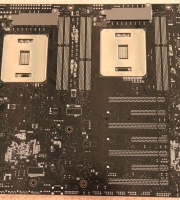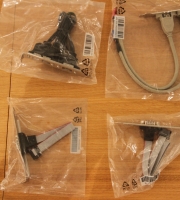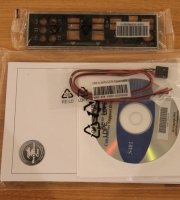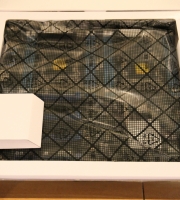Asus Z9PE-D8 WS
Asus’s “Workstation” (WS) series of motherboards is, in contrast to its ROG (Republic of Gamers) product line, aimed specifically at enthusiasts who ultimately desire stability over performance whilst retaining maximum functionality. The first of these boards to emerge was the P5WDG2-WS in late 2005, based around Intel’s 975 chipset and at the time, a flagship product in every respect. Ever since, the boards have incorporated a multitude of mainstream and high-end chipsets, including a handful of ill-fated Nvidia designs, and combined them with a comprehensive range of features.
In addition, the “WS” family includes the only motherboards Asus officially guarantees will support Xeon CPUs in a single socket configuration. Examples are the P8B-WS, which accepts socket 1155 “Sandy Bridge and Ivy Bridge” Xeons, the Z87-WS, which happily accommodates socket 1150 “Haswell” chips and lastly, P9X79 WS, for those with socket 2011 “Sandy Bridge EP” Xeons. The Z9PE-D8 WS photographed below is essentially dual CPU version of the latter, with Intel’s C602 chipset being one of several “server grade” equivalents to their consumer-oriented x79. The board plays host to seven PCI-E slots, these are physically shared between both CPUs so as to maximise the bandwidth available for each.
Slots 1 to 4 are linked to CPU1 while slots 5 to 7 are allocated to CPU2. All provide supprt for PCI-E 3.0 perepherals and the four blue slots allow for a quad SLI configuration with every card running at full x16 speed though it should be noted many users have experienced major issues in getting Nvidia’s “Kepler” based video cards to function reliably, especially when running multiple GPUs. Consulting the links below prior to investing in such a setup is thoroughly recommended!
Z9PE-D8 Discussion on Asus’s ROG forum
Z9PE-D8 owner’s thread on Overclock.net
In common with its x79 sibling, the board also boasts USB 3.0 (4 ports in total) and 6 SATA 3.0 ports, two by way of Intel’s chipset and 4 from a Marvell 9230 controller.
























